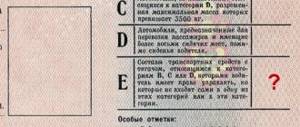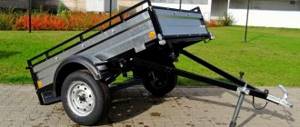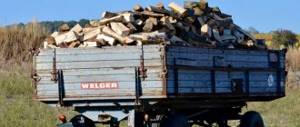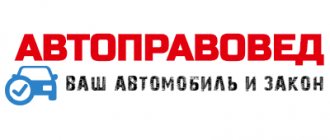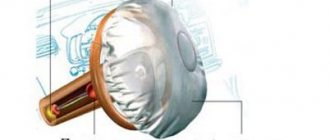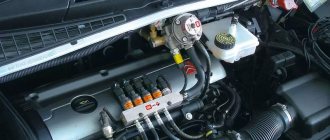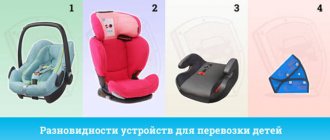About the established rules for driving with a trailer
Recently, there have been constant changes or additions to traffic rules regarding various issues.
According to the new rules, a tow hitch is also a vehicle and in cases specified by law, namely for legal entities and when transporting goods over 3.5 tons, it must be registered, and the driver when transporting goods exceeding the total weight of 3.5 tons of the road train must have the appropriate category “E” on your driver’s license.
There are more different nuances regarding the transportation of cargo in a trailer, and the order of qualification groups in the traffic rules has expanded; when passing the exam to drive a vehicle with a trailer, the driver must have a certain driver’s category in his license.
The answer to the question of how to drive with a trailer and what documents are needed when driving a vehicle is as follows:
- Driving with a trailer in a passenger car without documents is prohibited; a traffic police officer may issue a fine if a violation is detected;
- The towbar must be registered and have only standard certified towbar coupling devices. Homemade devices without certificates are prohibited;
- The trailer must have working lighting, signaling and dimensional devices that allow you to indicate the movement of the tow hitch and its maneuvers on the road, as well as rear-view mirrors with adjustable extensions that allow you to see the overview of the trailer in motion;
- According to established traffic rules, when driving with a trailer as part of a road train with a total weight of up to 3.5 tons on highways, outside populated areas, the vehicle speed should not exceed 90 km per hour. And on other highways at more than 70 km per hour or according to the established speed limits;
- A driver with license category “B” has the right to use a trailer with a weight not exceeding the weight of the tractor and the total weight of the road train should not exceed 3.5 tons;
- When using a trailer, the permissible overall dimensions of the towing device must be observed; the width is no more than 2.55 m, the height is up to 4 m and the total length of the road train, tractor with trailer should not be more than 20 meters;
- In conditions with limited visibility, it is not recommended to use a towed mechanism on the road;
- The trailer should be used only for its intended purpose, it is prohibited to transport people in the trailer, and it is also forbidden to use the trailer when the visibility of the cargo is poor, when the warning devices, registration sign are covered, or when the towed vehicle is unstable;
- The towbar must have wheel wedges in its design in case of an emergency stop on a sloped road.
About the installation of factory-made and home-made towbars
The choice of a tow hitch that acts as a trailer hitch for a vehicle depends on the quality of the product brand, cost and mounting method.
When choosing products, you should give preference to proven factory fastening units, for example from the following companies:
Towbar mounting devices are different and designed for different weights. The structure can be solid or consist of elements: a transverse frame and a connecting ball assembly; the attachment point with a lock is important.
Therefore, the designs are divided into the following:
Welded structures are mounted directly to the rear of the machine. They have a high degree of reliability and load-carrying capacity. Removable elements are secured with bolts and can be dismantled at any time; they are also considered reliable and cost more than welded ones. And the last flange devices are installed in a special platform of the towbar frame and have a snap mechanism.
When using, you should select only certified components that guarantee the quality of the product. The coupling head for a modern trailer has a locking coupling device, which ensures a reliable connection with the towbar head. The lock, as a rule, is located at the end of the drawbar body itself and can have a different form of attachment under the drawbar.
The locking mechanism is selected based on the following parameters:
Basically, all lock-type devices have a European ball with a diameter of 50 mm and for selection it is enough to know the type of coupling device (or standard). Safety on the road depends on the locking mechanism, so they are not repaired, but simply replaced with a new one.
The trailer hitch kit also includes a socket assembly with 7, 13 or 15 contacts, and the towbar must accordingly have a plug with the same number of contacts.
When selecting, you should know the number of pinouts required. Since 2015, a special Technical Regulation TR CU 018/2011 “On the safety of wheeled vehicles” has come into force, which provides for the installation of the towbar in the standard place established for it according to the factory installation, in a special service center, without welding or drilling holes.
If the design of the machine does not have space for installing a trailer hitch and the manufacturer’s documentation does not provide for its installation, then installation of the device will be considered a change in the design of the machine.
If the trailer is manufactured independently or any modifications have been made to the design of the trailer, only factory-made, certified locking elements or removable units for docking with the towbar should be used for coupling to the vehicle.
Having such mechanisms, you can undergo quality tests in the laboratory with the confidence of receiving a certificate for a self-assembled coupling device for a round drawbar.
About preparing a trailer for operation and fines for violations
The driver must remember that the towbar should also be inspected and serviced before making a trip. You must be sure that it is in good working order and meets safety requirements.
The following measures should be taken before traveling with a tow hitch:
- Check the reliability of the connection between the trailer coupling mechanism and the vehicle. Duplicate the hitch with a safety connection;
- Lubricate the joints of the towbar, check for play in the connection and eliminate it if it appears;
- Inspect all light signaling devices, replace faulty lamps;
- Check the free movement of the wheels of the towbar and, if necessary, apply lubricant to the wheel bearings;
- Check the condition of shock absorbers, springs, reliability of fastening and absence of leaks;
- Finally, the tire pressure is checked; it must be no less than the established norm according to the passport.
The driver must comply with the loading standards on the towbar and the rules for placing and securing the load. Overload is not allowed. When placing a load on a single-axle trailer, it is very important to position the load strictly on the trailer axis and secure it.
A slight displacement can affect the stability and maneuverability of the towbar and the load can even break the hitch. Excessive forward movement of the load can prematurely wear out the trailer hitch and lead to deformation of the tow bar.
Shifting the load backward reduces the safety of transportation; contact and controllability drop sharply. Premature wear of car and trailer tires occurs. Avoid shifting the load and secure it using seat belts.
If the driver fails to comply with traffic rules while driving a car with a tow hitch, an administrative fine may be applied to the driver in the following cases:
- In case of incorrect transportation of cargo in the amount of 500 rubles;
- There is no open category in rights when transporting cargo in excess of established norms, up to 5,000 rubles;
- If there are no transit or other license plates on the trailer, a fine of 5,000 rubles or deprivation of a driver’s license will be imposed;
- There is no MTPL policy or there is no information about the trailer in it;
- The trailer or tractor is faulty or the docking is incorrect. In this case, you should stop driving and fix the problem;
- The trailer creates an emergency situation due to improper driver control.
About responsibility and the need to register a tow hitch
Modern cars have the ability to install a trailer hitch in accordance with the technical documentation for the vehicle. You can also check with dealerships about the possibility of using a trailer hitch for this vehicle model.
A ban on the use of a vehicle as a traction force can only be in a case limited by the plant, the impossibility of constructive and technical installation of these means.
As a rule, a tow bar should not be registered with the traffic police in the following cases:
You should also take into account the operation of a passenger car trailer by weight; the total weight for the trailer hitch should not exceed and the total weight of the road train should not exceed 3.5 times.
About the features of driving with a trailer
Each driver has to master the skills of driving with a towbar on his own, gradually delving into the process of control and driving. And the method of reversing with a trailer is generally unique in each case and a beginner will not be able to cope with it right away.
When driving back with a tow hitch, you should monitor the condition of the trailer in the rear mirror; when it moves to the right, turn the steering wheel to the left and otherwise in the opposite sequence. The steering wheel should be turned smoothly without sudden jerks to avoid turning the trailer sideways.
The main driving features include the following:
- When starting, movement with the tow hitch should be carried out smoothly without sudden jerks;
- Along the route, move at a steady speed, smoothly accelerating or slowing down;
- Turns and overtaking on the highway should be done with extreme caution, using the calculated margin for maneuvers. And when driving in an urban environment, provide in advance for all subsequent lane changes and braking at intersections;
- When there is heavy traffic, take into account the distance from the nearest cars and the braking distance;
- Observe the established speed limit, take into account weather conditions, gusts of wind and precipitation when driving on the highway;
- If the towbar skids, try to level it in motion by increasing the speed or steering in the opposite direction.
Types of connection diagrams
There should not be any difficulties in connecting a Kurgan trailer or the same MZSA with a VAZ 2110. Everything is our own, original, and therefore simple, provided by the manufacturer.
But situations are different. Some require a special adapter adapter, others need to adjust the wiring itself and determine which wiring goes where. Supposedly incompatible trailer hitches and machines can in fact be connected. But this is quite difficult to do.
There are several important points to consider:
- If the machine is used to connect to different caravans from different manufacturers, it would be logical to install a pair of 7-pin sockets;
- For Russia it is not very convenient and easy to select a “company” for 13-pin sockets;
- Depending on the model, series and year of manufacture of the car, they may have differences in terms of pinout. It happens that side lights are output to pin 5, although on another version they go to pin 7;
- Previous owners of used cars could well have done something weird and used their own special circuit to connect the trailer;
- You should always check the car's electrical circuit and consult official documents.
Not everyone has preserved their native documents. And then people turn to various forums for help, looking for answers on the World Wide Web.
I'm not at all opposed to you reading my materials. But some issues require individual consideration. That’s why I invite you to ask them in the comments, and I try to answer everyone.
For trailers connected to vehicle towbars, I have special recommendations.
Contact the manufacturer. Or go to a good, trusted electrician. Moreover, it is not necessary to go to the office of the company that produces the car or trailer. Everything can be found on official resources. Such information is completely true, and therefore you will not find errors common in the recommendations of supposedly skilled people. Electrics are a very important component of a car. Any mistake made when connecting incorrectly can even result in a short circuit and damage all electrical equipment.
I very much doubt that anyone wants to face this. Follow this simple advice.
Pinout options
At first I thought that I would describe to you in detail where each contact is on the socket, where it goes and what it is intended for.
But now they understand that the idea is pointless. It will only confuse you even more and drive you into a dead end. We need to do it much simpler. Visual examples are the best option. I will prepare for you several images showing the essence of typical pinouts on sockets of towing coupling devices. They should not act as the basis for your own connection. Remember, only official documents and manufacturer's instructions. Each machine may have its own characteristics.
Well, let's start with the good old domestic cars. This is where we most often see trailers.
In the photo above you see what a standard 7 pin pinout looks like. In general, remember that almost every tow bar for a specific car comes with instructions and a connection diagram.
Nothing complicated. But the situation with European cars. The differences are minor, but they are there. Therefore, consider what kind of car you have at your disposal.
There is already a 13-pin monster here. In fact, there is nothing particularly difficult in connecting, but still the difference of 6 contacts makes itself felt.
As you can see, each standard scheme has its own characteristics. Connecting a trailer to a car is more than just connecting two plugs. Sometimes you have to rack your brains here. And in order not to break it, you can turn to good specialists. For example, to us.
see also
DIY installation of a universal headlight washer
